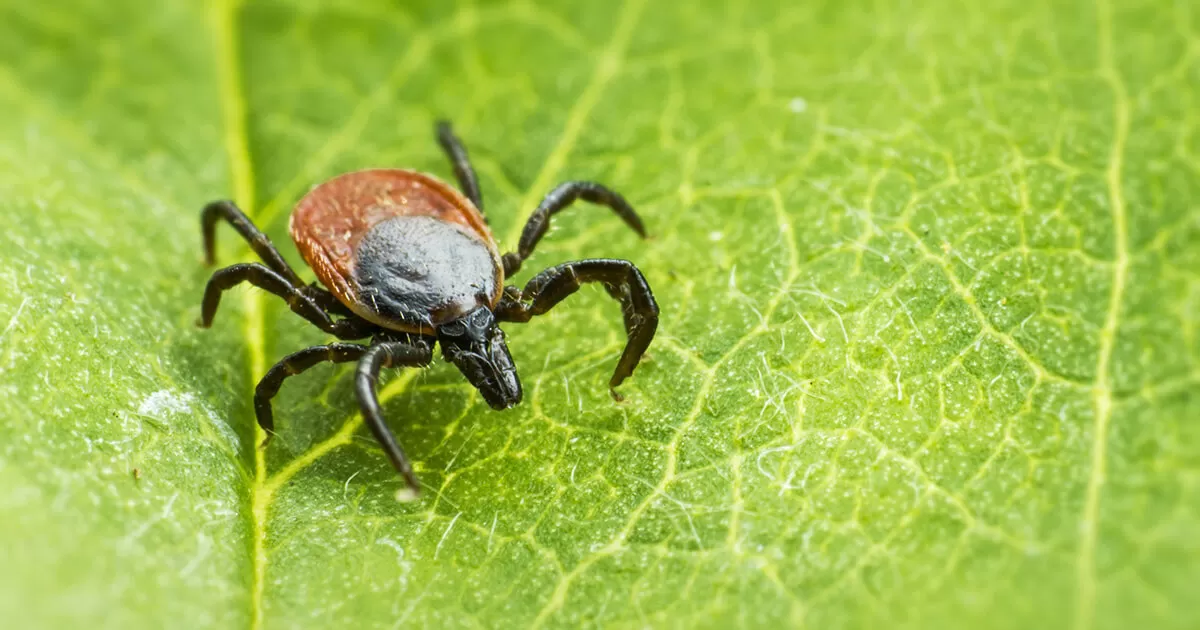Protect Yourself From Lyme Disease

Lyme disease is one of the most commonly reported tick-borne illnesses in the U.S. The Centers for Disease Control and Prevention estimate that about 300,000 people are diagnosed with Lyme disease in the U.S. every year.
Lyme disease is caused by the bite of tiny Lyme-infected black-legged ticks (sometimes called deer ticks), yet 30% to 50% of people with the disease do not recall being bitten by a tick. Although people may think of Lyme as an East Coast disease, it is found throughout the U.S., as well as in more than sixty other countries. If Lyme disease is not diagnosed and treated early, it may become late-stage or chronic. That’s why it’s important to learn how to help protect yourself from tick bites.
Know the signs and symptoms
You might have heard that if you have Lyme disease, you will have a circular, bulls-eye-shaped rash (called erythema migrans). But did you know that this bulls-eye rash is estimated to occur in less than 10% of those who contract Lyme disease? What’s more, some people develop an ordinary looking rash that appears red or a rash that might look like a bruise, spider bite, or ringworm. Others may not even get a rash at all.
Early symptoms of Lyme disease may feel like the flu. For example, they can include:
- Fever.
- Chills.
- Headache.
- Fatigue.
- Muscle and joint pain.
- Swollen lymph nodes.
Lyme disease may affect all parts of the body and organ systems. In a survey of over 3,000 people, those with chronic Lyme disease reported having an average of three “severe” or “very severe” symptoms. Almost three-quarters of people with Lyme disease said they had at least one symptom that was severe or very severe.
Later signs and symptoms include:
- Severe joint pain and swelling.
- Numbness or tingling in hands and feet.
- Drooping on one side of face (Bell’s palsy).
- Inflammation of the brain and spinal cord (meningitis).
- Heart problems (irregular heartbeat, heart palpitations).
It’s important to know that Lyme disease symptoms may vary from person to person and that not all people with Lyme disease experience the same or all of the symptoms. What’s more, many of the later stage signs and symptoms of Lyme disease are common in other diseases, too. That’s why the disease is often called “The Great Imitator.” And people with Lyme disease may be misdiagnosed with different illnesses or conditions such as chronic fatigue syndrome, fibromyalgia, multiple sclerosis, and depression. This can cause a delay in the diagnosis and treatment of Lyme disease.
How you can help prevent tick bites
Try to avoid tick bites by following these tips:
- Stay out of wooded, brushy, and grassy areas, especially during the months of May, June, and July. If you do walk or hike, walk in the center of trails to avoid brush and grass.
- Wear light-colored clothing. This makes it easier to see ticks on you.
- Wear long pants and long-sleeved shirts.
- Wear shoes that cover your entire foot.
- Tuck your pant legs into your socks or shoes.
- Tuck your shirt into the waist of your pants.
- Wear a hat.
- Spray an insect repellent containing DEET on your clothes and exposed skin (except your face).
- Spray your clothes with products that contain permethrin.
- After being outdoors, remove your clothing and wash and dry it at high temperatures.
- Always check your body for ticks after being outdoors. Be sure to check warm moist places on your body such as your groin, armpit, and scalp (and don’t forget to check the family pet—they can get Lyme disease too!).
Keep in mind that not all ticks carry Lyme disease, and some ticks carry other diseases. In either case, never crush a tick with your fingers. Doing so could cause you to infect yourself. Learn how to safely remove and dispose of a tick. For help identifying ticks, visit CDC.gov/ticks.
Be sure to talk with your healthcare provider right away if you have been bitten by a tick or have symptoms of what might be Lyme disease.
[1][2][3][4][5][6][7][8][9][10][11]
References
- 1. Centers for Disease Control and Prevention. Tick-Borne Diseases. Accessed August 4, 2017.
- 2. Centers for Disease Control and Prevention. Prevent Lyme Disease. Accessed April 24, 2017.
- 3. Lyme Disease.org. About Lyme Disease. Accessed March 22, 2017.
- 4. Bratton RL, Corey GR. Tick-borne disease. Am Fam Physician. 2005;71(12):2323-2330.
- 5. Lyme Disease.org. Lyme Disease Symptoms. Accessed March 22, 2017.
- 6. Merriam-Webster. Erythema migrans. Accessed September 6, 2017.
- 7. Lyme Disease.org. Early Lyme Disease. Accessed September 6, 2017.
- 8. Centers for Disease Control and Prevention. Signs and Symptoms of Untreated Lyme Disease. Accessed May 19, 2017.
- 9. Food and Drug Administration. Beware of Ticks…& Lyme Disease. Accessed August 7, 2017.
- 10. Food and Drug Administration. Ticks and Lyme Disease: Symptoms, Treatment, and Prevention. Accessed September 28, 2017.
- 11. Centers for Disease Control and Prevention: Tick Removal. Accessed April 24, 2017.





